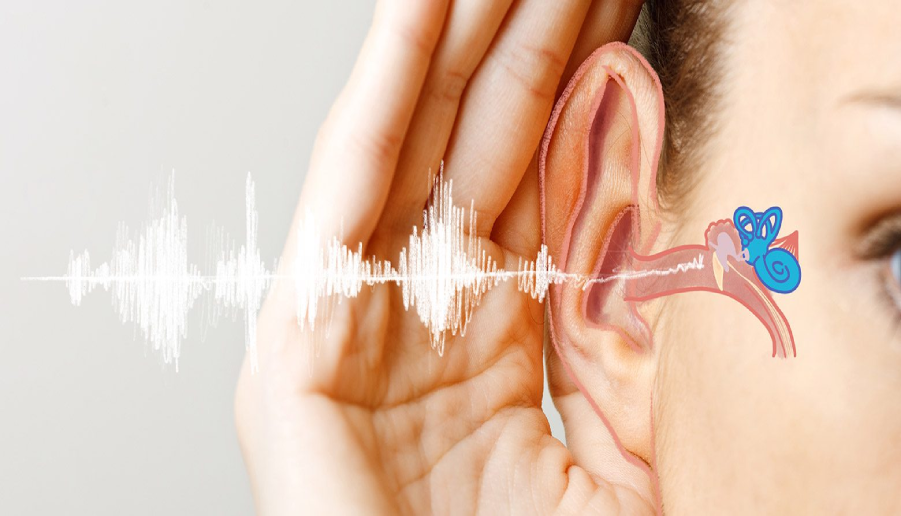Types and Causes of Hearing Loss

Hearing loss happens when some part of the mechanism that controls hearing is damaged or doesn’t work the way it should. Something can be wrong with the outer ear, the middle ear, the inner ear, the auditory nerve or even the part of the brain that controls hearing.
Parts of the Ear
The outer ear contains the pinna, the ear canal and the eardrum. The eardrum is the boundary between the outer and middle ear, which contains the eardrum and ossicles, which are the tiniest bones in the body. These bones communicate with the inner ear, which is made of the cochlea, semicircular canals and the nerves connected to the hearing system in the brain.
Types of Hearing Loss
ENTs, or otolaryngologists recognize four types of hearing loss causes. Conductive loss happens when something blocks sound from entering the outer ear and traveling to the inner ear. In sensorineural loss, the loss of hearing is due to the destruction of the hair cells in the cochlea or damage to the auditory nerve. This can be the result of aging. Mixed hearing loss involves both sensorineural and conductive hearing loss. There’s also a type of hearing loss called auditory neuropathy spectrum disorder. This happens when sound can enter the ear, but the brain can’t understand it. This is due to damage to the auditory nerve or something in the inner ear.
Severity of Hearing Loss
When a person goes to an ear doctor Los Angeles, or to an ENT for ear problems Los Angeles, they diagnose the degree of the patient’s hearing loss. It can be mild, moderate, severe or profound. If a patient has mild hearing loss, they can hear someone talking normally but may not hear everything that’s being said to them. A patient who has moderate hearing loss has trouble hearing any speech if the person isn’t shouting at them. Patients with severe hearing loss can’t hear anyone speaking at a normal level and may not even hear loud sounds. A person with profound hearing loss can only perceive very loud noises.
Diagnosing and Treating Hearing Loss
An ear doctor in Los Angeles can also determine if the patient’s hearing loss is in one ear or both ears or if the hearing loss is the same or different in both ears. There may be mild hearing loss in one ear and severe hearing loss in the other. An ENT for ear problems Los Angeles can also determine if the hearing loss happened before or after the patient learned to speak, whether it happened over time or was sudden and whether it gets better or worse over time or is stable.
Sometimes treatment of hearing loss is simple, such as the removal of ear wax or fluid. In other cases, the patient visits a hearing aid doctor Los Angeles to be fitted with a device that amplifies sound. A hearing aid doctor Los Angeles might also give the patient a cochlear implant or other surgical treatment to restore their hearing.
